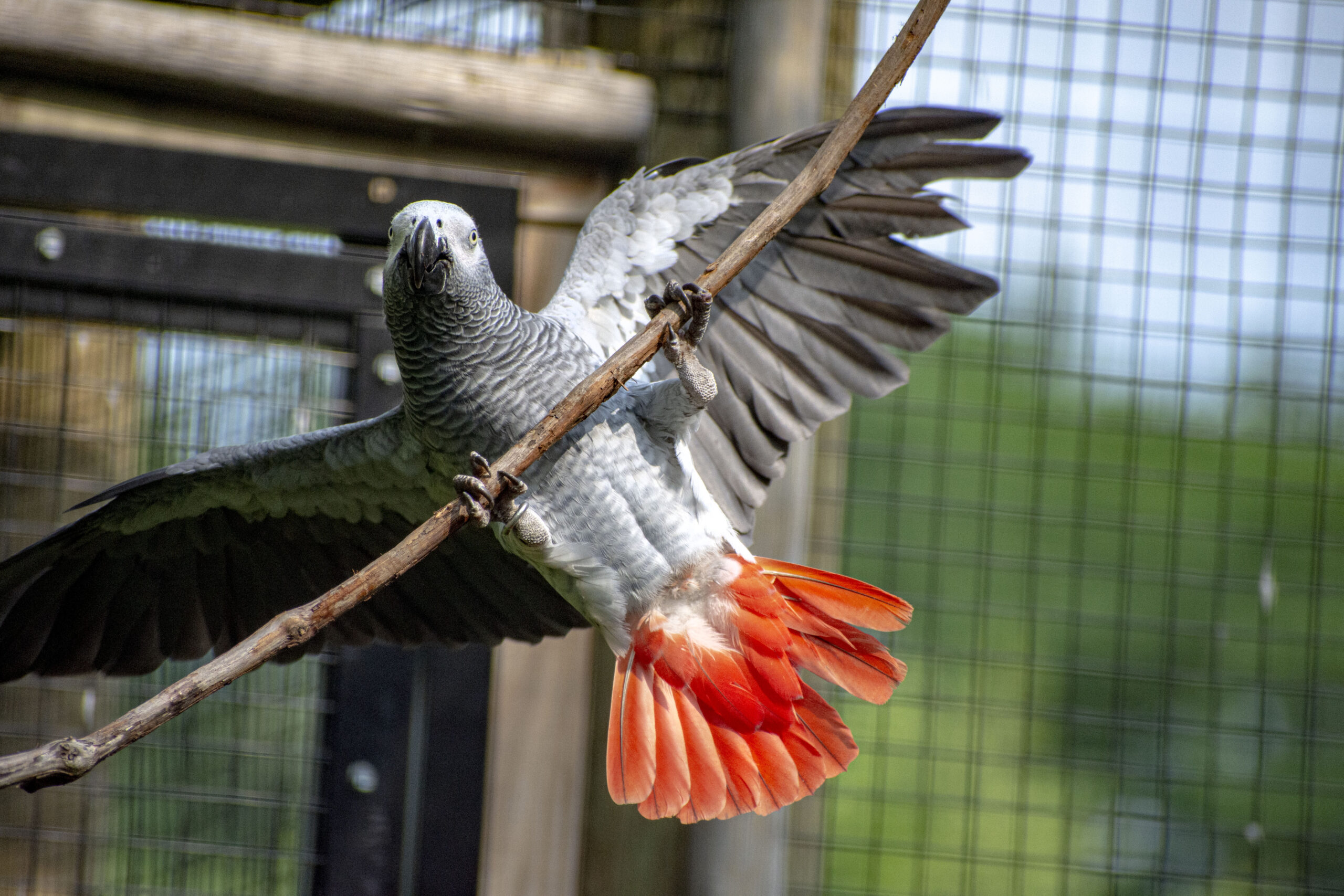Though they may look pretty, the bright red feathers help this species distract predators! When a predator spots this parrot, it will see the bright red feather first. If they pull out the red feather, it doesn’t harm the bird and instead give the parrot time to fly away to safety.
HELPING THE AFRICAN GREY PARROT IN THE WILD
The Fort Wayne Children’s Zoo supports World Parrot Trust, an organization conducting groundbreaking research, hands-on conservation programs, habitat protection, community education, and advocating for better protection of this species from illegal pet trade.
I AM IMPORTANT TO MY ECOSYSTEM
These parrots play an important role in their ecosystem by helping propagate the forest. By spreading and dropping undigested seeds, they help colonize new areas of the forest and create new homes for other species.

